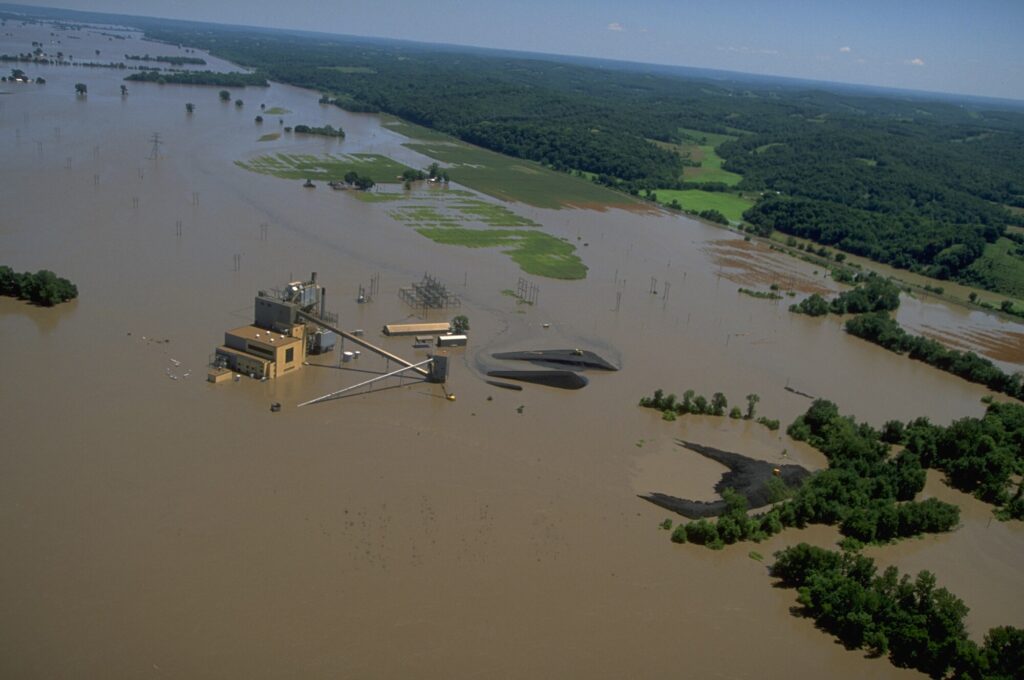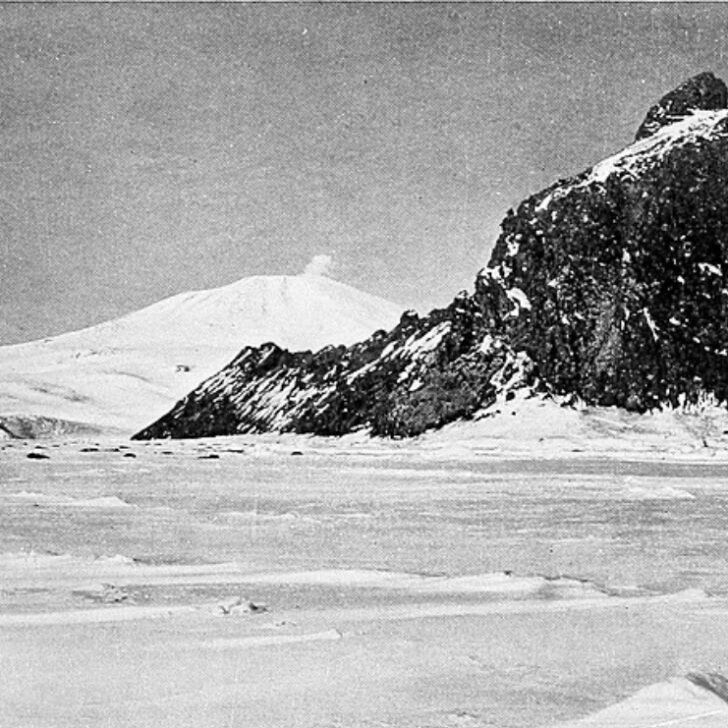In the summer of 1993, hundreds of volunteers pulled together to protect their town from the rising Mississippi River. One of the volunteers helping to sandbag the area around the levee was 23-year-old local James Scott.
Many thought that the water would hold, but unfortunately, on the evening of July 16th, the river broke through the levee and water ravaged a large area of farmland.


Scott, who was known as a local bad boy, would be interviewed by a local news station about the levee failing.
When the police saw the interview and learned that he was in the area at the time of the break, they suspected he may have had something to do with it.
However, it was an allegation from Scott’s friend that would kick off a criminal investigation, changing his life forever.
This witness alleged that shortly before the flood, Scott told him that he was going to break the levee so that his wife couldn’t get home and he could continue drinking, partying and having fun.
Authorities took this statement seriously and arrested James Scott for intentionally causing the flood that damaged farmland. For his crime, he was sentenced to life in prison.
However, Scott has maintained his innocence, suggesting that the police quickly jumped on him as a suspect because of his minor criminal history.
Today, he sits in a Missouri prison hoping to have a new day in court.
Who Is James Scott?
James Robert Scott grew up in Quincy, Illinois and was known in the area as one of their local bad boys. As a child, his mother said that he was like any other happy-go-lucky little boy. However, as he grew older he began to find himself in trouble.
By the time he reached his early 20s, he had committed a variety of offences and had served time in prison. His favorite crime was arson. In the 80s, he was charged with burning down Webster Elementary School, a historical building in town, as well as a garage and several other buildings.
Once he was released from prison, he met and married his wife Suzie and landed a job working at Burger King. He was still known to enjoy heavy drinking and partying and was a suspect in several local petty crimes.
The Mississippi River Flooding Of 1993
In 1993, much of the U.S. received long periods of torrential rain, resulting in unprecedented water levels. Many states simply weren’t prepared for the flood that it caused.
The town of Quincy and its section of the Mississippi River were no exception. By mid-June 1993, there was a serious threat that the river would overflow the levee and destroy all of the farmland below.

The community pulled together, resulting in hundreds of civilian volunteers working alongside emergency services to make sandbags that would be stacked in order to raise the height of the levee.
To most people, it looked as if it would hold. However, just after 8 pm on the evening of July 16th, water breached the levee and flooded the adjacent farmland, resulting in 14,000 acres of damage.
The flood water also reached a petrol station, which resulted in a fire and explosion. Thankfully, no one was killed in the incident, however, all of the bridges in the area were destroyed.
A Suspect Emerges
On the day that the levee broke, James Scott had been helping to sandbag. When reporters arrived on the scene to report on the flood, he just so happened to be walking by, so he was stopped and asked to give an interview.
He agreed and talked to the journalist about how he had spent the morning sandbagging when he noticed a weak spot, which he tried to reinforce.
He left for a bit to go have a drink and when he came back, he learned that the levee had been breached. This interview didn’t sit well with local authorities, who were well aware of Scott’s shady criminal past.
Authorities didn’t think it was just a coincidence that Scott happened to be at the scene of the flood shortly after it happened.

In the interview, his clothing appeared to be too clean for the work he claimed to have been doing and he wasn’t wearing the required life vest that all the other volunteers were wearing.
They focused on him as their main suspect and brought him in for questioning related to another crime where he was the suspect.
Scott told them the same story he had told reporters – he was only there to help his community.
At the same time, he admitted that he may have moved a few sandbags from one location to another area that appeared to be weak, and he was worried this may have caused something to happen. The police weren’t buying his story.
They began speaking to friends of Scott and didn’t learn much of value until they spoke with a man named Joe Flachs.
Flachs, who was under house arrest at the time, claimed that shortly before the flood, he and Scott were drinking together when he said he was going to break the levee so that he could continue to party.
His wife, Suzie, was working as a waitress on the other side of the river, so by breaking the levee and flooding the bridge out, she wouldn’t be able to make it home that night and he was free to continue drinking and partying as he pleased.
This was enough information for the police to arrest and charge James Scott for purposely causing a catastrophe, a 1979 Missouri law that made it a crime to intentionally cause an incident like the flood.
They believed his motive was to keep the party going and cheat on his wife.
A Circumstantial Conviction
James Scott’s trial began in November 1994 and was based entirely on circumstantial evidence. There was no physical evidence to tie him to any kind of vandalism that would have caused the levee to fail.
One key piece of circumstantial evidence the prosecution had was the statement from Joe Flachs, about Scott’s desire to keep his wife away and continue to party.
They identified several other witnesses who later came forward stating they had also heard him bragging about breaking the levee.
The theory was that James Scott must have created a gap in the levee by burrowing a hole and allowing water through.
The defence team refuted this claim and brought in two independent soil scientists who testified that in its condition at the time, the levee was destined to fail.
There had been several other levees just upriver from Quincy that had also failed and it was believed that the community effort to help save the levee by bringing in the assistance of bulldozers may have actually contributed to its breach.
It would take the jury only four hours to convict Scott of purposefully causing a catastrophe and sentence him to 10 years to life in prison.
It was decided that this sentence would run consecutively with his previous 10-year burglary sentence, making it a 20-year sentence in total.
Some believed this to be a harsh sentence, considering that Scott has no history of violent or sexual crimes, while others in town believed that justice had been served.
James Scott has maintained his innocence, stating that he was there just trying to help his community that day. He believes he was convicted based on his criminal past alone.
His first parole hearing is set for July 2026 and he is hoping he will be released from prison at that time.
An Insurance Controversy
During the trial, the president of the Fabius River Drainage District, Norman Haerr, testified against James Scott. Haerr also happened to own the largest piece of land that had been damaged by the flood.
It was revealed in a Vice News documentary that Haerr didn’t have flood insurance at the time of the catastrophe, yet he was able to receive an insurance payout because the cause was determined to be vandalism.
If it had been determined that the levee failed on its own that evening by an “act of God” resulting in a natural disaster, Haerr would not have been able to collect any insurance money. None of this information was disclosed at trial.













Leave a comment